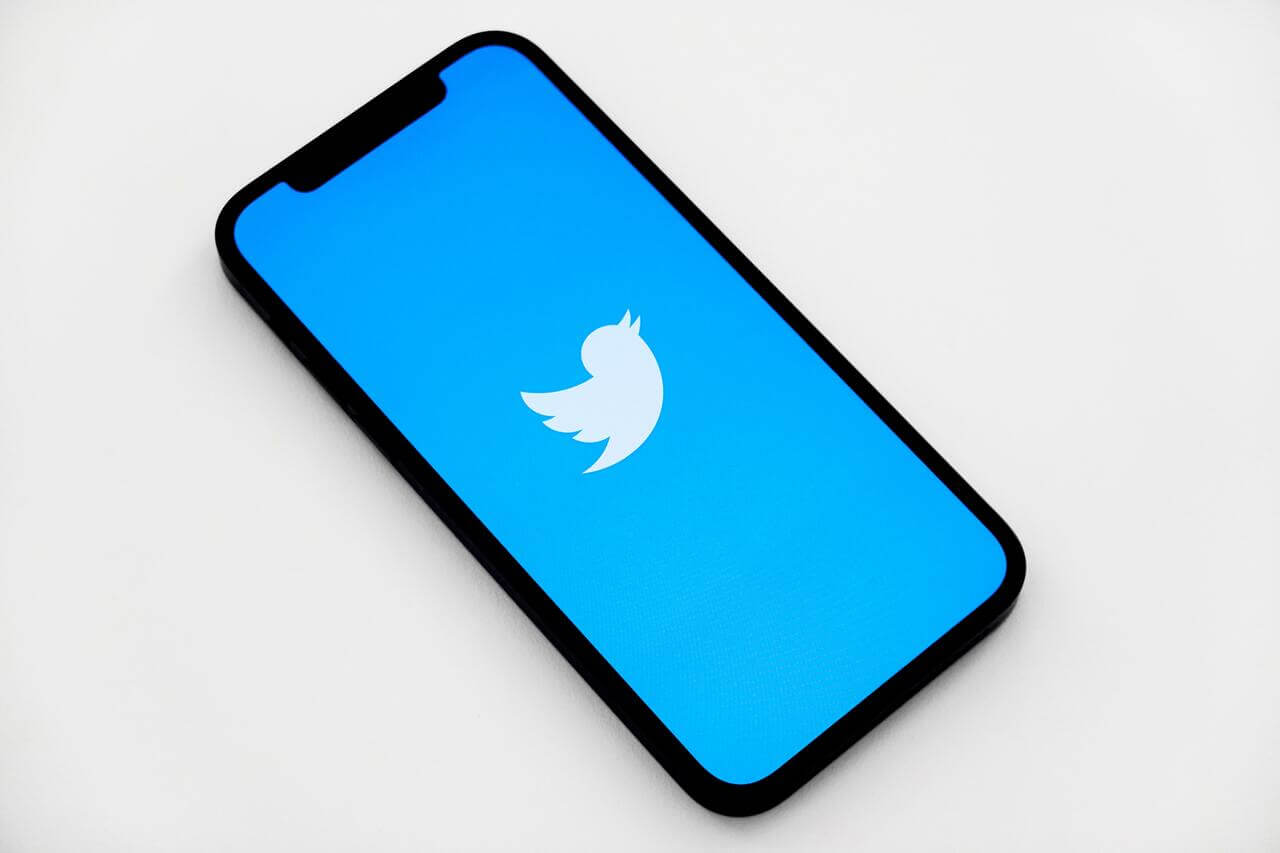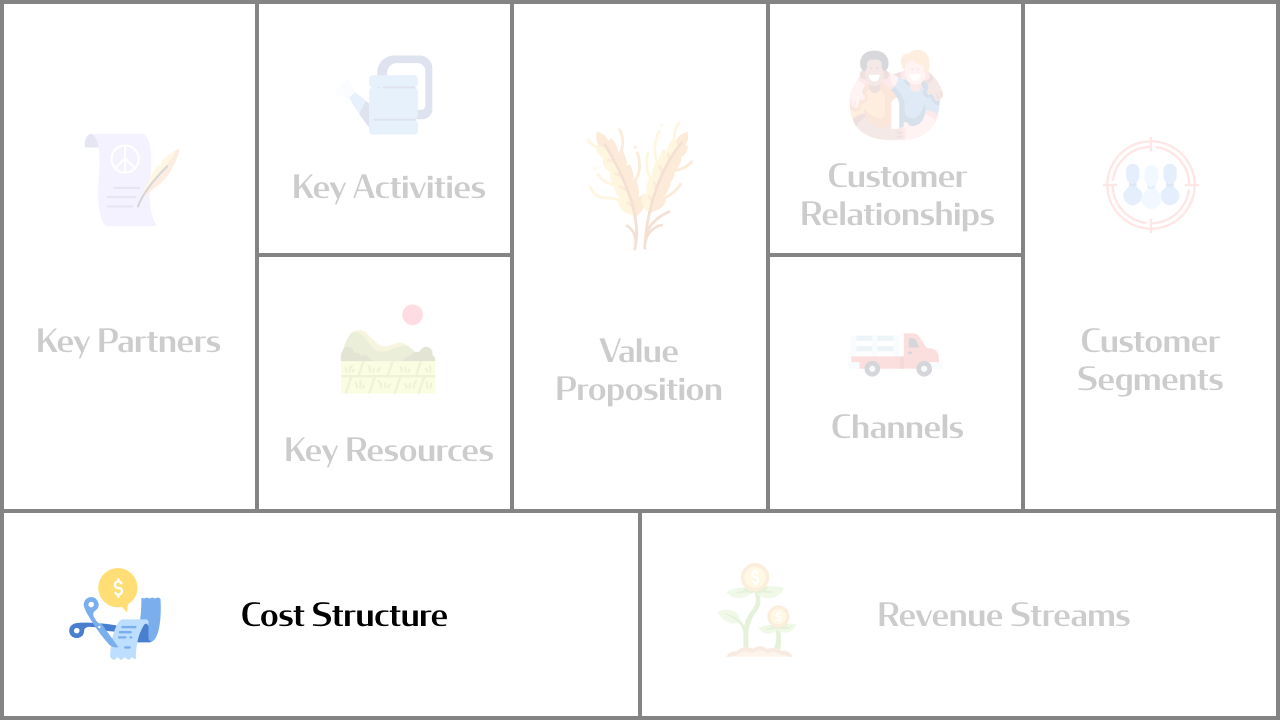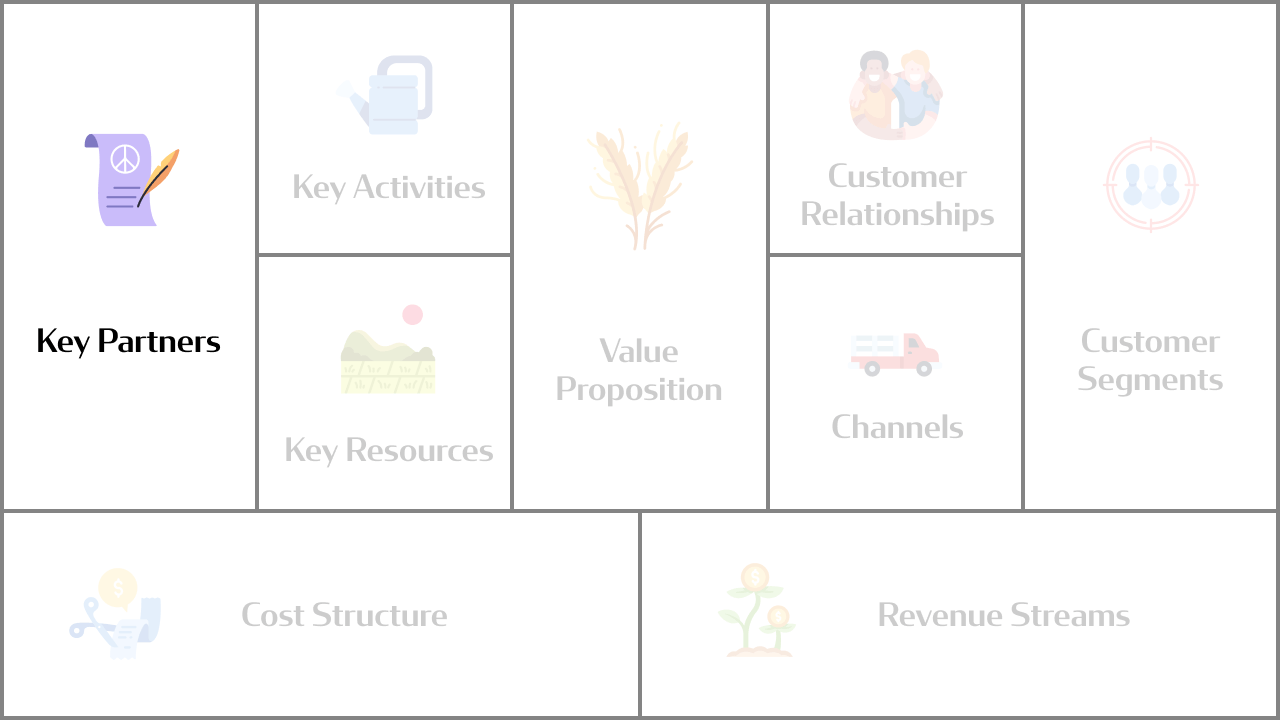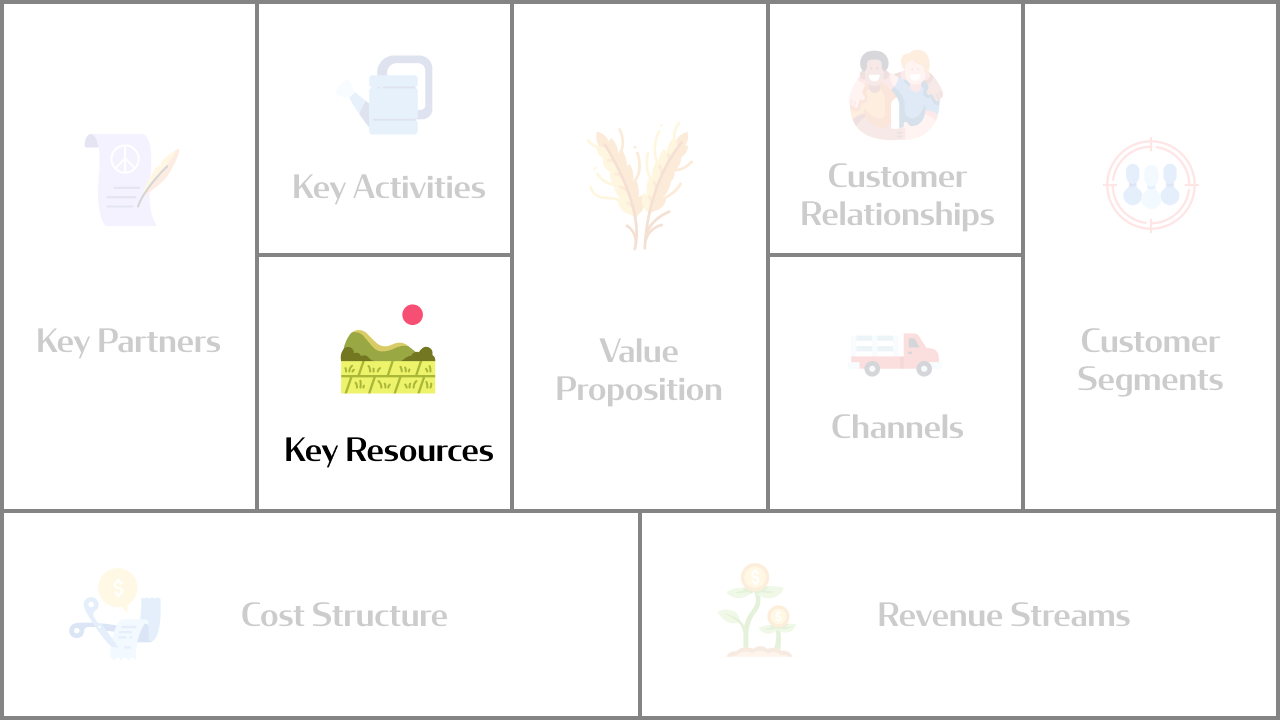Next, on the business model canvas explained, we will discuss the customer relationship segment. Once you’ve figured out your value proposition and defined your customer segment, the next step is to build, nurture, and grow the relationship between your business and your customers.
The key question here is how much effort you must make to deliver your value proposition to customer segments?
Think about the brands or businesses you feel loyal to or enjoy buying from. One of the things you’ll notice is how easy it is to get in touch with their customer service department. This is just one example of how companies manage their relationships with customers.
How your business interacts with its customers defines what customer relationships are. The structures you have in place are essential to maintaining good customer relationships.
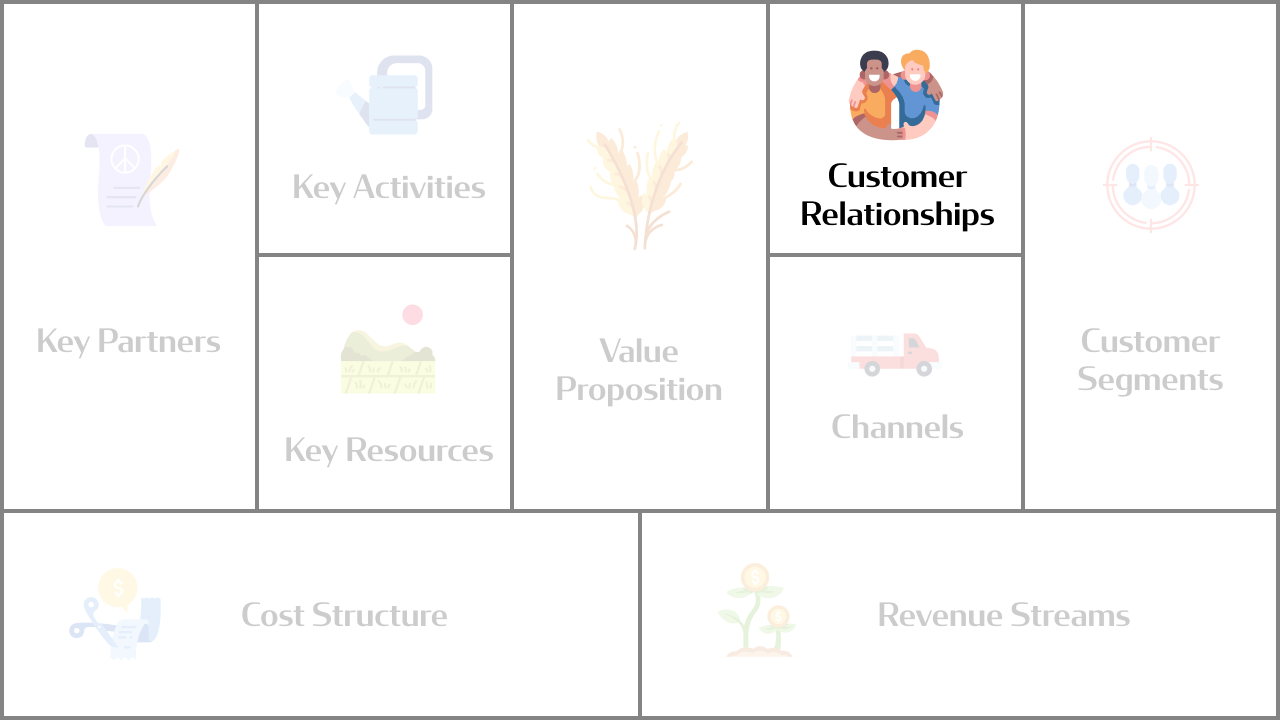
Types of Customer Relationships
First, let’s look at the different types of customer relationships you could implement.
- Personal assistance
This type of relationship is concerned with human communication. You could choose to talk to your customers using the phone, email, face-to-face, or other means of personal contact.
For example, when LinkedIn was having issues with getting people to sign up and use the site, they launched a personal survey campaign. This allowed LinkedIn staff to take some customers out for lunch to discuss the issues they were having with the site.
- Dedicated personal assistance
This relationship is more personal and is tailored to the individual customer’s needs. This type of relationship includes assigning a customer representative to a specific customer who consistently engages with the same person.
This gives the customer familiarity, builds trust, and allows the customer representative to really get to know and understand that particular client. You can foster deep and meaningful relationships with influential customers over a prolonged period.
Let’s take a look at a real-life example. Conducting surveys is a common way for companies to get relevant and accurate customer feedback. But usually, most companies churn out online surveys, which tend to be impersonal. LinkedIn’s founder, Reid Hoffman, felt the same way.
When LinkedIn was just starting, they failed to get enough people to join the site. So they came up with the idea to hear firsthand from the LinkedIn user what issues they had with the site. Instead of impersonal online surveys, LinkedIn created a system where team members sought out users to have lunch with them and share their LinkedIn experience. This allowed the LinkedIn team to understand what their customer segment liked and disliked.
- Transactional
You might be familiar with this type of customer relationship. Transactional relationships are pretty impersonal; you hardly interact with the customer, and contact is limited to a specific transaction.
The Amazon online marketplace, for example, is mainly transactional. Most customers only interact with Amazon online while they order their product. This is the only interaction they’ll have with the brand for many customers.
- Co-creation
Nowadays, we’ve seen more companies going beyond the traditional customer-vendor relationship. Going back to our Amazon example, the initial interaction between the company and customers was transactional. But now, Amazon has gone a step further and invites customers to write reviews on products, thus creating value for other customers.
- Self-service
This type of relationship involves no direct relationship between a business and its customers. Clients are entirely self-sufficient, so there is no need to establish human interaction. You can start your business using the self-service model. Still, sometimes companies can move to self-service at a later stage.
For example, IKEA’s entry into self-service relationships with its customers was unique. In 1971 an electrical fault at the IKEA flagship store caused the sign on the roof to catch fire. The damage was substantial, but the company did not want to halt operations; instead, they came up with the idea for a self-service area and began selling most of their products this way. Customers could simply pay and pick up their furniture at the self-service area, without going into the damaged store to view the display.
- Automated services
This relationship is a combination of self-service with automated processes. Both processes can identify specific customers and provide them with accurate information on their transactions.
Additionally, automated services can be designed to mimic a personal relationship, providing excellent and efficient customer service. Netflix is famous for using automation and machine learning to improve its customer experience. Not only do they offer personalized viewing, but they also stimulate personal relationships by suggesting accurate movie or TV show recommendations.
- Communities
These relationships nurture community connections between customers, which can be done online, for example. More and more companies utilize user communities to become more involved with current and future customers. This can be done using third-party websites or applications such as Slack or Facebook to communicate with your customers and encourage interaction.
How to Develop Good Customer Relationships
In today’s business environment, the key to nailing this segment is to develop an effective communication system. People can instantly get in touch with the brand and engage with the company through new posts, images, and collections uploaded to social media.
Additionally, a crucial building block to mastering your customer relationships is to consider the perfect relationship between you and your customer. Should it be personal? Automated? Or a bit of both? For instance, it could be personal to one customer segment and automated to the other.
You also need to put yourself in your customer’s shoes as a company. Think about what the ideal relationship would look like from their point of view? For some customers, the ideal relationship would be that there is no self-service and that they have access to a dedicated personal assistant.
As you go through this process, you should also consider that this relationship you’re trying to create will heavily impact your customer’s experience. Additionally, your customers may have certain expectations about the type of relationship you should establish with them. Therefore the two key questions to ask are; how much assistance is actually needed? And what is minimum assistance required to sell to a customer?
So for example, in the case of IKEA, you shop at IKEA because it’s cheap. You can assemble
Furniture in your house to save some money, but it’s not really a pleasant experience spending the entire Saturday assembling furniture. Then again there are other customers who prefer assembling furniture themselves instead of hiring someone or buying custom-made furniture, which tends to be much more expensive.
Questions to ask
To help you define your relationship with your customers, there are a few questions you can ask. These include:
- What type of relationship does each customer segment expect you to establish?
- Which ones have we established?
- How much would it cost you to establish a relationship with each customer?
- How do your methods integrate with the rest of your business model?
- Does the customer have a dedicated personal contact they can contact in person, via phone, or email?
- Do you have physical or online channels that are dedicated to customer interactions?
- How could you automate some parts of the process, to scale up?
- Would moving to the left on the scale “personal – automated” help you differentiate from your competitors and allow to deliver or redefine value proposition?
Your customer relationships segment should answer the question of how you get, keep, and grow customers. Let’s talk about these factors briefly for a bit.
- Getting customers: Here, you’ll have to figure out how customers find out about you and make their initial purchase? So, for example, this could be through advertising on Google.
- Keeping customers: How do you keep your customers loyal? Excellent customer service is one of the ways you may be able to retain your customers.
- Grow: You’ll have to figure out how to get your customers to spend more? A good example will be using a monthly newsletter to keep them informed about your latest products. But this depends on the industry and the type of business you conduct. For some businesses a newsletter may not be such a good idea.
Examining the ways you propose to interact with your customers will help you define how your business will operate. Overall, the easiest way to develop good customer relationships is to walk through the entire customer journey in detail.
The Key Takeaway
Whatever types of customer relationships you choose, the most crucial point is that you must always keep your customers in mind. And lastly, think about the costs incurred for each type of relationship and how you can integrate these with the rest of your business model.





